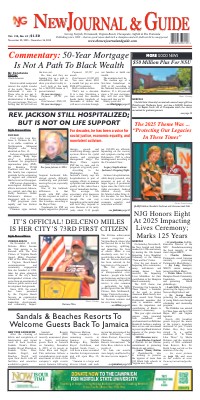Civil
Health: Doctors’ Association Warns TB Cases On The Increase
After years of decline, tuberculosis cases in the U.S. are climbing again, prompting a warning from the National Medical Association as over 10,000 cases were reported in 2024—posing new risks to vulnerable communities.
#Tuberculosis #PublicHealthAlert #BlackHealthMatters #TB2024 #NationalMedicalAssociation #InfectiousDiseases #AntibioticResistance #HealthEquity #CDC #CommunityHealth

NJG Newswire
WASHINGTON, D.C.
After declining for many years, the number of cases of tuberculosis in the U.S. has been on the rise since 2021, according to the National Medical Association (NMA).
NMA, representing more than 50,000 dedicated African-American physicians and professionals recently reported that In 2024, 10,347 cases of TB were provisionally reported, up from 9,633 cases in 2023, and 8,332 in 2022,
TB is an airborne disease that mainly affects the lungs. The disease spreads when an infected person coughs, sneezes or speaks. Individuals with active TB can transmit the bacteria to others, particularly in enclosed or crowded spaces.
People in low-income, rural and urban communities often face elevated risks due to factors such as limited access to health care, more crowded living conditions, and a greater prevalence of underlying health conditions that can weaken the immune system.
While antibiotics can treat tuberculosis, some forms of the bacteria no longer respond well to treatments. Without treatment, active TB disease can be fatal.
Recognizing Symptoms
Tuberculosis primarily affects the lungs. Common symptoms may include:
• Persistent cough lasting 3 weeks or longer
• Chest pain
• Coughing up blood or sputum
• Fatigue or weakness
• Weight loss
• Loss of appetite
• Fever, chills or night sweats
If you or a family member experiences these symptoms – especially if you have been in close contact with someone diagnosed with TB – seek medical attention promptly.
Protecting Yourself and Your Community
To reduce the risk of TB infection:
Regular testing: Individuals in high-risk groups – including those with compromised immune systems, close contacts of TB patients, and residents of congregate settings such as shelters or correctional facilities – should consider routine TB screening.
Adequate ventilation: Proper airflow in living and working spaces can reduce the concentration of airborne bacteria.
Respiratory hygiene: Cover your mouth and nose with a tissue or your elbow when coughing or sneezing to minimize the spread of germs.
Prompt medical care: Early detection and treatment of TB are vital. Completing the full treatment regimen helps ensure recovery and reduces the risk of transmission.
Latent Tuberculosis
TB can be latent or inactive, meaning the infection is present in the body without noticeable symptoms.
For patients with inactive TB, treating it is the best way to protect them from getting sick with active TB disease. It is critical for those patients to complete the prescribed course of medication to prevent progression to active disease.
For more information, visit CDC.gov or speak with your healthcare provider.


 Politics1 week ago
Politics1 week agoDigital Download: Closing the Emerging Markets Digital Fair Share Gap

 National News1 week ago
National News1 week agoD.C.’s Chief of Police Pamela Smith Announces Her Resignation From Post

 Health1 week ago
Health1 week agoCreate New Holiday Tradition; Share Family Health History

 Hampton Roads Community News6 days ago
Hampton Roads Community News6 days agoBlack Men Rock At Awards Ball

 Black History1 week ago
Black History1 week agoAn NJG Series: Our History, Our Journey – Part III: Black-Owned Hotels In Norfolk

 Black History1 week ago
Black History1 week agoA Great Generation

 Black Arts and Culture5 days ago
Black Arts and Culture5 days agoKwanzaa & Emancipation: Dr. Colita N. Fairfax To Speak Jan. 1 On Cultural & Historical Legacy

 Black History1 week ago
Black History1 week ago’Tis The Season’ The Kwanzaa Holiday Celebrates Heritage, Hope & Community



















